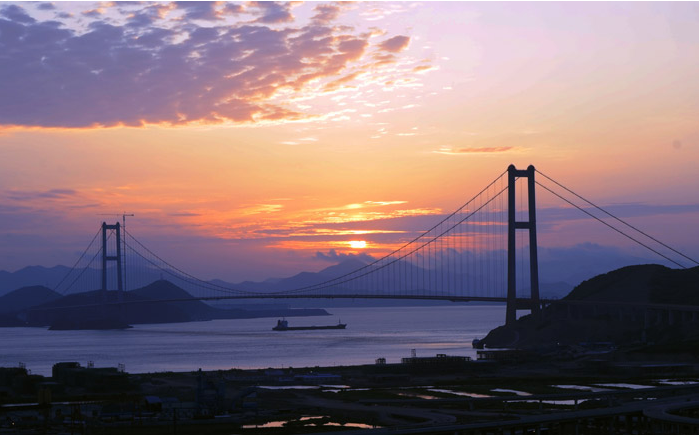
Science and technology.
科技。
Geoengineering.
地理工程學。
Implicit promises.
包含著承諾。
A geoengineering experiment has come unstuck. But there will be more.
地理工程試驗取得突破。可期待更多。
FOR the past few years, a European collaboration called IMPLICC (Implications and Risks of Novel Options to Limit Climate Change) has been looking at what it might mean to engineer the climate, by reducing the amount of sunshine that reaches the Earth's surface. A lot of IMPLICC's work, like much else in climate science, has taken the form of computer modelling. In its case the models try to mimic the effects of things like putting veils of reflective particles into the stratosphere, or brightening the clouds over the oceans.
近幾年在歐洲合作平臺上,簡稱IMPLICC(控制氣候變化--新穎選項的含義及風險)的組織,持續對減少陽光直射地球為目的研究做探討。探討是為了解該項氣候工程的含義。IMPLICC和其他氣候科學研究相似,較多采用電腦模擬程序。在這里,創造出的氣候模型設法模擬出兩種情況,其一是將層層的反光微粒放入平流層中,其二是增加海洋上空云朵對光線的反射度。
This week the IMPLICC team and other interested parties met in Mainz, Germany, to discuss the results-for the various models have turned out to agree far better than many of their creators expected. In particular, they suggest that particles in the stratosphere can indeed stop rising levels of greenhouse gases raising the overall global temperature, though in doing so they slightly cool the tropics while the poles warm a bit. Other things being equal, the models also agree that geoengineering tends to suppress the hydrologic cycle, with less evaporation and less rainfall.
IMPLICC團隊與其他相關組織,這個星期在德國--邁因茨舉行討論。多個模型結果的相符程度還比模型創造人所預計的更相似, 加強了預測結果的可信度。盡管溫室氣體在持續的增加中,研究顯示反光微粒能防止溫室氣體,造成全球氣溫的升高。 與此同時,預計到熱帶地區氣溫會微降, 南北極的氣溫則會微升。 所有其他因素不變,各模型一致顯示"水文循環"會遭壓制,代表將有較少的蒸發及降雨量。
Some researchers, however, want to go beyond modelling. They wish to experiment in the real world. The highest-profile of these schemes has been part of a programme called SPICE (Stratospheric Particle Injection for Climate Engineering), which is paid for mainly by Britain's Engineering and Physical Sciences Research Council (EPSRC). Much of SPICE takes place in computers and laboratories, but one part was to be an actual experiment-a tethered balloon with a kilometre-long hosepipe attached to it. The idea was to pump a small amount of water up to the balloon and thence out into the air, so as to assess the possibility of spraying out other substances at far greater heights.
然而,有些科研人員則選擇進行真正的實驗。最受矚目的是簡稱SPICE(平流層中注入反光微粒氣候工程)的組織。SPICE主要是由EPSRC(英國工程與物理科學研究理事會)助資,大部分研究仍在使用電腦程序及實驗室研究,一部分研究則在使用真實實驗。 實驗采用一公里長的輸送管拴住氣球。氣球升空后,實驗性地通過輸送管在空氣中噴灑水,為估計在更高氣層中噴灑其他物質的可能性。
This move to a practical project has proved controversial. Some people worry that tinkering deliberately with the atmosphere may cause more harm than good. Others fear that if geoengineering is shown to work it will, by offering a palliative for the problem of global warming, let politicians put off difficult decisions that might lead to a permanent solution. As Clive Hamilton, a philosopher critical of much of the thinking behind geoengineering research, pointed out to the meeting, though the environmental effects of such experiments may be nugatory, their effects on the way people think could be more profound, and much less easily contained.
轉向這類真實實驗模式是有它的爭議點。有人擔心,以粗淺的方法任意操縱大氣層,弊會大于利。此外,地理工程即使奏效,功效也不會持久。則學家--克利韋?漢密爾頓在會議中對地理工程研究背后的理念提出批評,指政治家可能借暫緩措施,推遲制定有難度的持久性對策。認為地理工程或對環境影響微不足道,但對人們的思考模式卻有更深層及無法控制的影響。
Cloud cover
云蓋
In light of such thinking, in September 2011, a "stakeholder committee" consisting of a geographer, a sociologist, an atmospheric scientist, an engineer and an adviser to Friends of the Earth (an environmental lobby group) who had been appointed by the EPSRC told the SPICE merchants they needed to be more convincing about how the experiment would be explained, how it would fit into ideas about the future, and how its safety and wisdom could be vouched for publicly.
這類思考方向的浮現,促使"利益相關者委員會"于9月2011年成立。EPSRC任命,由地理學家,社會學家,大氣層科學家,工程師及"地球的朋友"(環境行動組--該組織顧問)各一位所組成。委員會要求SPICE商家,對實驗目的,未來環境展望的合適性,如何對公眾提供研究操作上的安全及知識擔保,向這幾個方面做出更有說服力的解釋及支持。
A further complication was a patent application covering some relevant technology by Peter Davidson, a consultant engineer whom the EPSRC had asked to play a role in choosing what geoengineering work it should pay for. Though this application had been filed before SPICE was proposed, and Mr Davidson both declared his interest and recused himself from discussions on SPICE team when advising EPSRC, Matt Watson of Bristol university, SPICE's principle investigator, was sufficiently concerned about both the application and wider issues of the sort considered by the stakeholder committee that, this week, he cancelled the balloon experiment.
實驗的執行更因工程顧問--彼得?戴維森對相關技術做出專利權申請,而有所復雜化。戴維森同時受EPSRC委托,負責挑選可獲資助的地理工程項目。戴維森先生在SPICE組成之前以提交專利申請,也呈報有關利益沖突并對EPSRC提供專業指導時,刻意回避針對SPICE團隊的討論。盡管如此,身為SPICE主要調查員的布里斯托爾大學人員-- 馬特·沃森,對專利權申請及受"趣益相關者委員會"關注的廣泛問題持有所顧忌,以取消這星期的"氣球實驗"。
The meeting in Mainz also learned, though, of another experiment that has met with better fortune. Last September a team led by researchers from the Scripps Institution of Oceanography, in La Jolla, California, looked at whether clouds could be whitened artificially (and thus caused to reflect more sunlight back into space) using particles emitted from a boat. Such brightening has been observed in the exhaust plumes of cargo ships for some time, but Lynn Russell, who ran the experiment, was still surprised by how much brightening the team saw. Though Dr Russell's experiment had been designed mainly to look at how clouds form naturally, it paves the way for future work on geoengineering. How that will affect attitudes to global warming remains to be seen.
邁因茨會議仍從另個實驗有所獲得。實驗團隊來至加利福尼亞—拉奧拉,斯克里普斯海洋學公共機構,探討的是,利用船只排出的微粒體將云朵"人工白化"的可行性。云朵若經白化,就能把更多陽光反射回太空。盡管貨船排放出的廢氣羽狀物以被觀察出能使云朵變白,實驗人員--琳?拉塞爾仍對實驗成果,云朵的白化程度感到驚訝。拉塞爾的實驗是為觀察云朵的自然形成而設計,在此也為更多地理工程研究鋪路。該實驗會如何影響對全球變暖的態度,卻仍無法預計。











